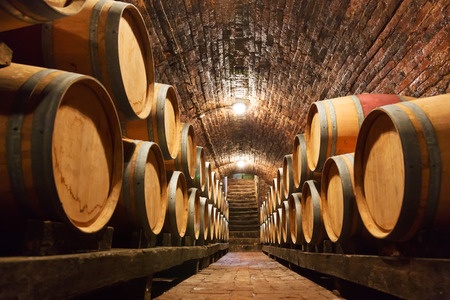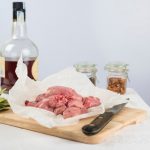
The oaking of red wine may seem to be an age old practice associated with the production of full bodied flavours. To be honest, the oak flavour as a concept really only took off in the very late sixties of the last century. Not everybody believed that oaking was acceptable simply because it ruined the flavour and hinted at the idea that the wine was not such good quality and needed some disguising. By the 80’s an oak flavour was seen as perfectly acceptable – a chardonnay for example would not be regarded highly without the hint.
Oaking as a verb may seem to be an odd word to use. The wood for barrels through the ages was made of oak wood but other timbers from cherry, walnut and chestnut have been exploited subject to their availability. Pine was used but it was recognised early on that pine notes in wine are not ideal. French barrels were made from a European oak, Quercus robur whilst American barrels use their continental equivalent, Quercus alba. Given there are so many oak species it is more than likely that many others have been used along with various mixes. Each species imparts a slightly different flavour and conneussiers recognise even the continent of the wine source on this basis.
When wine is stored in any wooden barrel then there will always be a slow and steady release of woody notes into the wine. This aspect of wine making has probably been with us ever since oak barrels were used which takes us back to almost 2,000 years ago probably by the Celts in Northern Europe (Work, 2014) and adopted by the Romans. We have grown up with oak notes for as long as wine has been produced. Indeed, a mature wine is recognisable by the amount of oaking notes picked up during extended storage. We do not find this objectionable !
A typical immature red wine can be quite unremarkable and lacking a full body and sophistication. Add a wood note and we start to hear tasters describe notes of charcoal, bacon, maple, wood (naturally), oak, vanilla as well as descriptors naturally associated with fresh red wine of berry, blackberry and so forth. Astringency and mouth-puckering are also developed further by the release of various acids and polymers.
Oaking also helps stabilise colour. Tannins released from the barrel help to stabilise the anthocyanins by absorbing oxygen which often oxidises these colour pigments. They probably also help with condensation reactions which deepen the colour and start to add a slightly blue hue because of the reaction between anthocyanins, tannins and acetaldehyde.
What seems to create the distinctive notes is the charring that the internal surfaces of the oak barrel are subjected to. Charring produces an additional range of aromas which readily lend a different and distinctive element. It is this aspect of wine making which causes most upset because inconsistency in the process can alter the sensory profile greatly. In the medieval ages, charring notes were generated when coopers burnt the oak when applying the hoops which strengthen the barrel. To obtain the classic barrel shape, the wooden planks or staves needed to be bent into shape with heating so that the metal hoops would then hold them in place. Use of fire meant the constant presence of burnt, toast or roasted notes.
The upset for wine tasters and producers adopting traditional methods has come from the use of alternatives to artificially age the wine. Wood chips, burnt oak powder, added wooden staves in plastic barrels and polybins have all been commercially used. There is also a move away from deliberate oaking to rely on the natural processes associated with storage – a return to a more honest process of wine making.
Article by Frank Hardy, Wine Maker In Monmouth UK.
Work, H.W. (2014) Wood, Whiskey And Wine: A History Of Barrels. Reaktion Books


Leave a Reply